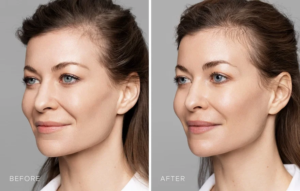Mobile Security Cameras can be wired or wireless and offer various features that can help businesses prevent shoplifting, vandalism, employee theft and other forms of crime. Most of these cameras can be accessed remotely via a smartphone or tablet app.
Despite their many benefits, security cameras can be vulnerable to hacking. To avoid this, always ensure you use strong passwords, enable two-factor authentication and keep firmware up to date.

A security camera helps deter crime, and it can also capture incidents to aid in investigations. It is a good idea for any business to have one in place, as they help improve company-wide security and can reduce the risk of theft. Depending on the industry, a security system can be installed in areas such as parking lots, offices, retail spaces, and warehouses.
A wireless security camera typically communicates via Wi-Fi, but some are wired and need to be plugged into an electrical outlet. For a wire-free option, choose a model that runs on batteries. Most battery-powered cameras last about three months with normal usage, and some can even be hooked up to a solar panel for energy efficiency and convenience.
The best security cameras have an adjustable sensor sensibility, allowing you to set the threshold at which it activates and triggers motion alerts. This lets you reduce the number of false alerts caused by pets, inanimate objects, or cars, as well as the amount of data consumed by the camera. Most models feature a night vision mode that turns on automatically when the sun goes down, and it is essential for any home surveillance system to have this feature.
Some battery-powered security cameras have two-way audio communication, which is a great active deterrent and allows you to scare off any intruders that might be at your home. This feature can also be useful for communicating with parcel delivery drivers, family members, and friends. Some security systems, such as SimpliSafe, also provide video verification, which is a feature that gives your alarm monitoring center temporary access to your livestreams during emergencies to speed up response times.
For a more immersive experience, consider a camera with a 180-degree field of view or greater. This can give you a complete overview of the room and will allow you to spot any suspicious activity. You can also find a camera that uses artificial intelligence to identify faces and landmarks, which is especially helpful in difficult lighting conditions. These features can be found in many models, and they are often offered as a part of a premium security package.
Security cameras are used everywhere – in stores, homes, public spaces, airports, schools, and other buildings. They help deter crime by scaring criminals away and catching them in the act. These devices also let people monitor areas from afar. Some of the best security cameras come with features like night vision and motion detection. They can be controlled with a smartphone or a smart home device that connects to the camera over Wi-Fi. Some cameras are even equipped with a spotlight or a floodlight for scaring intruders.
High-quality security cameras typically have an HD1080 resolution, which provides a clear picture of what’s happening. Some have wide-angle lenses that can capture a large area with one shot. Others have zoom capabilities that enable users to see close-ups of objects and faces. Some have built-in microphones that allow users to hear what’s happening.
Many security cameras can record 24 hours a day, which is ideal for commercial spaces with high foot traffic. They can also record only when motion is detected, which can help reduce storage costs and battery usage. These cameras can be triggered to record or take pictures at specific times, such as when the alarm goes off in your home.
The security camera market is highly competitive, with a variety of different models to choose from. Some brands, like Wyze, are focusing on making their cameras more affordable. Their new lineup includes a range of indoor and outdoor cameras, including ones that can pan and tilt mechanically. They’re also designed to work with a range of third-party devices, such as doorbells and smart locks.
Another common type of security camera is the dome security camera. This device is held in a discreet dome enclosure and can be mounted to the ceiling or wall. It can be used indoors or outdoors, and it’s a popular choice for businesses because of its versatility.
Surveillance cameras are a popular tool for reducing crime in crowded public spaces. They’re often placed in busy areas, such as shopping malls and parking lots, to deter criminal activity. Some surveillance cameras have face recognition software that identifies suspicious individuals. In some cases, the software can compare the face of a suspect to criminal mugshots. This can speed up police response time and reduce crime in the area.
Security cameras can capture high-resolution videos and images in a variety of lighting conditions. Some cameras are designed to operate well in low-light situations, and many include night vision features that allow the camera to capture a clearer image at night. If you are looking for a security camera that will work in any lighting conditions, consider the following factors when making your purchase:
Some security cameras may appear blurry at night due to glare from bright surfaces such as walls or patio lights. Some cameras use in-camera image processing to reduce glare, but this can result in a washed out or blurry image. For better results, look for a security camera with a large aperture that can capture more light, or one that uses a technology like 3D DNR to produce clearer and brighter images.
In addition to brightness, the field of view is a key factor to consider when selecting a security camera. The wider the field of view, the more likely you are to spot activity and get a full picture of what is happening. Some security cameras also offer pan and tilt options to further expand the viewing angle.
Most security cameras are powered by either a battery or an AC power cord. If you opt for a wired camera, it’s important to ensure that the cable is long enough to reach your intended mounting location and that it’s secured properly. Also, make sure the camera is connected to a private Wi-Fi network as opposed to public one; otherwise, anyone can access the device’s recordings.
Many security cameras are designed for DIY installation, and the process is usually relatively simple. However, you may want to consider professional installation, which is available from some major home security companies as well as several smaller brands.
Security cameras can be a controversial topic, especially when they’re used in a business or in the home. Some people believe that they represent an invasion of privacy, while others feel that they can help prevent crime. No matter what your beliefs are, it’s important to check the local and state laws before deciding whether to use a security camera in your home or business.
The ability to communicate in real-time adds a whole new dimension to security cameras. Whether you need to talk to someone at your door, check in on kids or elderly family members, or even interact with your pet while you’re away, two-way audio allows you to speak and listen to those within the camera view in real time. It’s like a walkie-talkie for your home security system, and it’s something experts recommend you consider for added peace of mind.
Before purchasing a camera with two-way audio capabilities, it’s important to check the specifications for this feature and verify your Wi-Fi network supports it. You will also want to ensure your Internet connection and router are stable enough to support the feature. Once you have your camera set up, it’s easy to activate this feature using a mobile app. Simply access your camera’s settings menu, and look for an option related to audio input and output. Most cameras allow you to use this feature with the click of a button, so it’s convenient and user-friendly.
One of the most important aspects to consider when looking for a security camera with two-way audio is the sound quality. Make sure that you can hear the person at your front door or the children in another room clearly, and that they can hear you as well. Look for cameras with noise reduction technology, which improves the audio experience by reducing background noise and other interference.
In addition to two-way audio, you should also choose a security camera with an easy DIY installation. You don’t want to have to drill holes in your home in order to install a camera, and if it seems too difficult, you may not use it regularly. Cove’s indoor camera, for example, requires no drilling and comes with a mount that you can place on any flat surface.
Aside from these features, it’s a good idea to find a camera with a warranty and customer support in case any problems occur during or after the installation process. You should also check local laws regarding surveillance audio, as it may be prohibited in certain areas.


